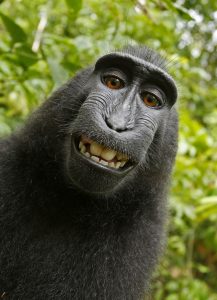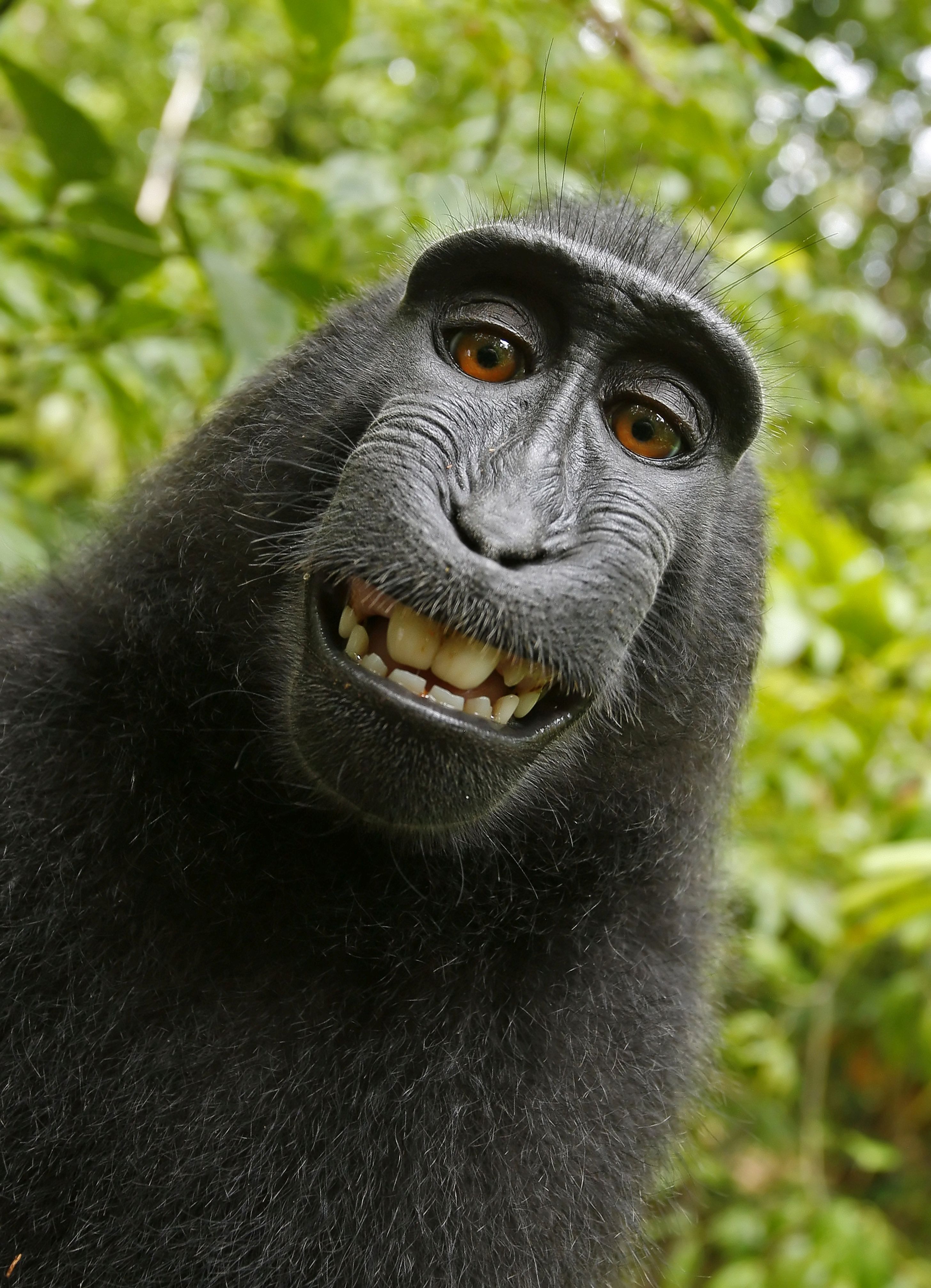No, it’s not a detective novel. And it’s not a children’s story. It’s a real legal case pitting a Crested Macaque monkey named Naruto against a (human) photographer named David John Slater. And for about three years it’s made its way through court filings, discovery, argumentation, fierce litigation, and appeal, finally ending up in front of three judges on the 9th U.S. Circuit Court of Appeals in San Francisco.

In 2014, Slater published the magnificent photos on-line and in his book Wildlife Personalities.
Also in 2014, Slater complained to on-line sites like Wikipedia that they were using his photo of Naruto without permission, in violation of copyright law. Their response was that Slater didn’t hold the copyright because he didn’t take the photos. Naruto the monkey did.
Then in 2015, People for the Ethical Treatment of Animals (PETA) went a step further and claimed that it was Slater himself who was in violation of copyright law, because he was using Naruto’s photo without permission. Copyright law is clear, they said, that copyright rests with whoever pressed the shutter.
Less clear was whether monkeys could hold copyright. So the case, unbelievably, went to court.
The litigation was bitter, expensive, and drawn out.
In addition to matters of precedent like whether copyright is limited to humans — the US Copyright Office says yes, PETA says no — the case was clouded by the fact that PETA may have had the wrong monkey. It may not have been Naruto but rather a friend who snapped the now-famous photo. Also in question was whether PETA had standing to litigate on Naruto’s behalf.
In October, Slater and PETA reached an agreement — Slater would donate a quarter of the earnings from his book to macaque protection charities — and PETA sought to dismiss the appeal.
But the judges of the 9th Circuit wanted to rule. And they did.
In his opinion, Judge Carlos T. Bea wrote that the monkey did in fact have constitutional standing to sue. (“The panel held that the complaint included facts sufficient to establish Article III standing because it alleged that the monkey was the author and owner of the photographs and had suffered concrete and particularized economic harms,” as the court staff summarized things [PDF].)
But he also wrote that the monkey did not have statutory standing, because “the Copyright Act does not expressly authorize animals to file copyright infringement suits.”
Astonishingly, in this regard the court was in part following precedent set by a 2014 case of whales suing the president (yes, you read that right): Cetacean Community v. Bush. There the same 9th Circuit ruled that if legislators wanted to let animals sue they should have said so.
Additionally, the panel noted that phrases like “heir” in the Copyright Act point in the direction of its having been intended only for people, who have heirs, and not animals, who do not — though this reasoning strikes one as potentially circular.
In the end, the panel upheld the lower court’s ruling and ruled strongly in favor of Slater, granting his request for an award of attorneys’ fees. The panel also chastised PETA, wondering “whether Naruto might initiate an action for breach of confidential relationship against his (former) next friend, PETA,” if only Naruto were “capable of recognizing [PETA’s] abandonment.”
So there you have it. The marvelous monkey copyright case has concluded.
For now.





One thought on “The Marvelous Monkey Copyright Case”